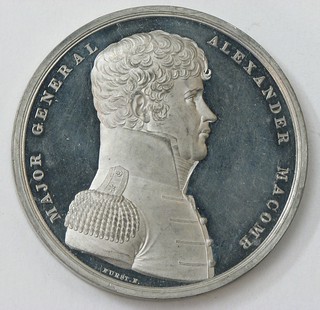
PREV ARTICLE
NEXT ARTICLE
FULL ISSUE
PREV FULL ISSUE
WAYNE'S NUMISMATIC DIARY MAY 17, 2020Without coin shows or club meetings to go to, my Numismatic Diary has been set aside for a while. One highlight is always the meeting of my northern Virginia numismatic social group, Nummis Nova. The dinners are always great fun and feature the sharing of interesting numismatic items from our members' collections. My diaries of the meetings include a number of images of the exhibited material. This week I reached out to our members and they've shared some of their recent acquisitions and other great items virtually. Early Odd Denomination Notes
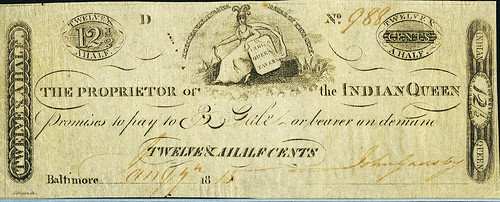
1815 Indian Queen 12 1/2 Cent Scrip Note, Baltimore, MD 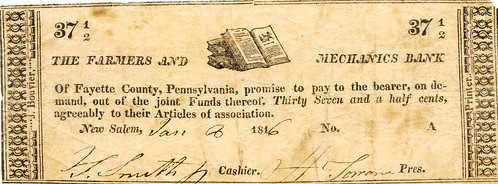
1816 Farmers and Mechanic Bank note, Fayette County, PA Dave writes: "The 1815 12 1/2 cent note from the Indian Queen Tavern in Baltimore is signed by the owner, John Gadsby, who also owned Gadsby's Tavern in Alexandria." Gadsby's Tavern hosted events for George Washington and the building still stands. Nummis Nova has held a few of our dinner meetings there. Great numismatic connection. -Editor Rare Mining Notes
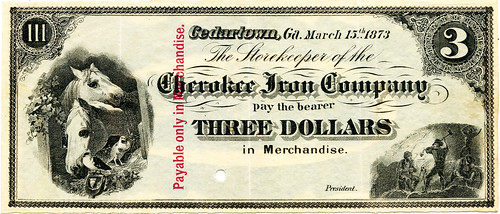 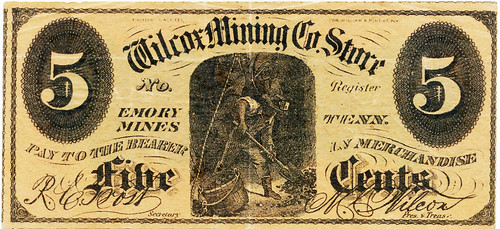 Yankee Robinson Quadruple Show Counterstamp
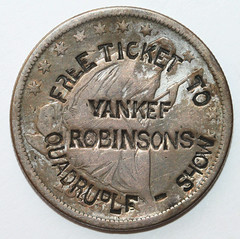 War of 1812 Congressional Medals
"The early die state of the white metal example shows that the finish of the original medals was what we now call a cameo proof, with frosted relief and mirror-like fields. This finish is also seen on surviving gold medals and well-preserved silver medals awarded by the Navy. Note the struck-through stray fiber debris below and left of FURST (Moritz Furst, the engraver). "The later die state shows rust pits on the uniform jacket and extensive lapping to remove rust from the field - the high part of the die. The lapping nearly removed FURST.F., effaced parts of the uniform lapel, and made a gap between the point of the bust and the rim. There's also a new divot in the die below the bust forming a surprisingly regular circular raised dot. "This and other dies of the series were paid for by the War or Navy Department but remained at the Mint and through the 19th century many rusted or were damaged by mishandling there. For perspective, the dies were hand-engraved and cost in the neighborhood of $500 each when most were made between about 1815 and 1825, and a Bureau of Labor Statistics inflater equates that to about $11,000 in 2020. But $500 was a livable annual income in 1820 so the real cost was arguably much more in today's dollars." 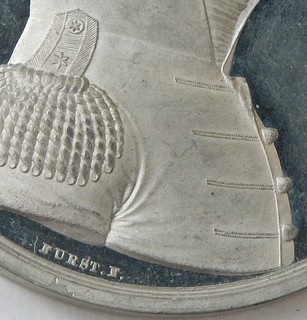 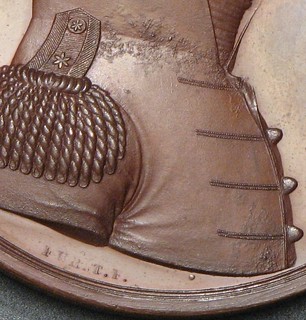 Robert Hoppensteadt writes: "Those notes and the medals are very cool. I haven't been able to win anything new - a well known whale has been active and driven prices past my interest level." Thanks, everyone. 'Til we meet again.... -Editor  Wayne Homren, Editor The Numismatic Bibliomania Society is a non-profit organization promoting numismatic literature. See our web site at coinbooks.org. To submit items for publication in The E-Sylum, write to the Editor at this address: whomren@gmail.com To subscribe go to: https://my.binhost.com/lists/listinfo/esylum All Rights Reserved. NBS Home Page Contact the NBS webmaster 
|
